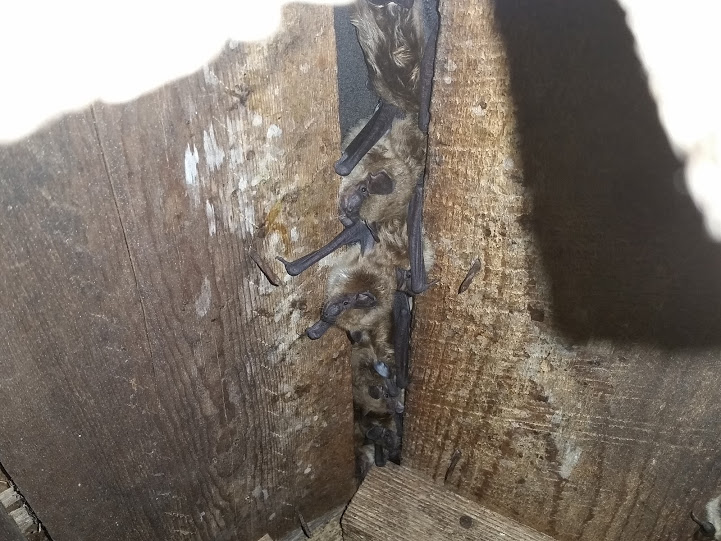You’ve noticed a strange smell in your house, or you’re hearing scratching, chattering or screeching sounds, especially at night. A quick trip up to your attic reveals that a local bat population has chosen your home as their own. Bats love dark, quiet places where they can sleep the day away undisturbed. While they may provide the benefit of hunting more harmful pests, such as mosquitoes and hornets, having them roosting in your home can be a nuisance. When you hire our bat removal experts in Pickering, one of the first things they will do is identify how these creatures are getting into your home.
Bat Entry Points
Your attic may not have any windows, so how could flying mammals be getting in there? Unfortunately, it does not take much to allow a bat to find its way inside your home. Bats do not chew their way through your walls; rather, they look for pre-existing entry points. Most bats local to the area can squeeze through a hole the size of a dime, and your typical house is not very bat-proof. Even a single entry point can be the main entrance and exit for a sizable bat population, so even with the utmost effort, it can be difficult if not impossible for the untrained eye to notice all bat entry points.
Identifying Entry Holes
Your home likely has many points around the foundation and roofing that bats could enter through, though not all of these holes necessarily lead into the interior of the house. You can tell, however, if a hole is being used by bats because it will be stained with a greasy brown residue. This is indicative that many bats are passing in and out, and brushing off the oils and dust from their fur as they do so. It is also likely that you will find bat defecation or “guano” around the areas that they are coming in and out, which is the typical cause of unpleasant odours that come with bat infestations.

The Ways Bat Guano Can Damage Your Home
Bat infestations may seem harmless at first, but they can actually cause significant structural damage to your home if left unchecked. Guano contains chemicals that are corrosive to the materials used in building houses, and a buildup can start to eat away at your ceilings, walls and floors. Another risk with guano is that it carries the many diseases that the bats are infected with. Bats are one of the biggest culprits for the transfer of zoonoses, which are diseases that are communicated from animals to humans. Histoplasmosis, an incurable lung infection, is also caused by inhaling dried bat droppings, which is why we always recommend having these creatures removed sooner rather than later.
Don’t Fear the Bats
As prudent as it is to get rid of a bat infestation, it is not a good idea to leave out poison or try to remove them yourself. Bats are an important part of the ecosystem and they help to reduce the populations of insects that would otherwise go unchecked. If you poison bats and they leave your house and die, their corpses can be eaten by other wildlife and poison those animals too. If you go into the bat’s living quarters yourself without protection, they will not attack you, but you are putting yourself at a much greater risk of contracting a zoonosis from them. Due to their endangered state, bats are also a protected species under the law, and killing them is illegal in most areas.
Hire Experts to Remove Bats
Professional bat removal teams have the protective gear and equipment to properly deal with a bat infestation. They understand bat behaviour and are trained to do thorough checks of the houses they are clearing. Our Skedaddle Pickering team uses humane techniques to completely remove bat populations from your home while minimizing the risk to you and any harm to the environment. Browse our website today and contact us for a consultation.




